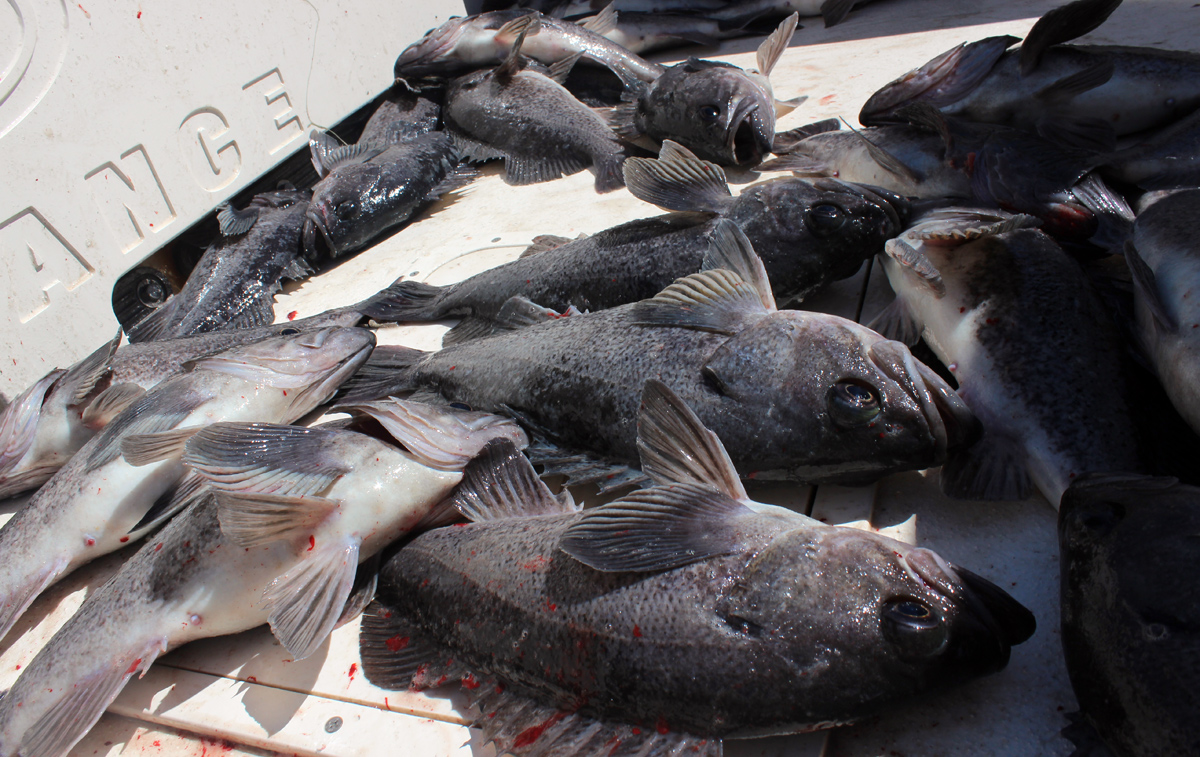The Headlands of the Quinault Region
Far to the north of Westport and the entrance to Grays Harbor, the flat beaches of Ocean Shores gradually give way to the rolling hills of Iron Springs and Moclips. Further north lays a wild and rugged coastline of the Quinault region. It is marked by towering cliffs, roaring surf, sea stacks and rocky pinnacles, and some phenomenal inshore fishing. Few venture this far away from port. You can find great fishing way closer to Ocean Shores and Westport, but the scenery is unlike anywhere on the Washington Coast.
We reeled in our salmon trolling gear mid day and shifted to bottomfish. Time to head north. The small native village of Taholah lays at the mouth of the Quinault River and just north of there are the ominous cliffs of Cape Elizabeth. The entire area is nearly untouched by civilization. Aside from the rooftops of Taholah, I would guess that our view today was the nearly unchanged since George Vancouver sailed the HMS Discovery northward in the late 1700’s, exploring the wild unknown that is our Pacific Coast.
Today our discovery was a phenomenal school of aggressive Black Sea Bass.
A New Experience For Everyone
No member of our crew had experienced fishing on Washington’s Coast before. Jen and Jessica were from Indiana, freshly graduated from university and on a month-long trek across the American West before returning home to begin their careers. Mike and Rebecca and their folks were out on the ocean near Westport for the first time. Captain Ian and I were both excited to share this special place with our guests. We made the long run and now it was time to find the fish.
Fishing Near Cape Elizabeth
We cruised around the inshore near the Cape for a bit searching for good bottom structure. Captain Ian located a healthy school of Black Rockfish on the sonar screen. The water was about thirty feet deep and the bottom was comprised of continuous rock piles and crevasses. We set up for the first drift and everyone had their rods readied. Short light-tackle spinning rods with a double shrimp fly setup.
We dropped all six lines and most of the rods were doubled over with fish before the dropper weight hit bottom. That is what we came for! When folks experience the fast-paced fishing action that happens when we go after Rockfish, the one word that I think best describes their reaction is shock. They get bit well before they expect to, all of the memories of past fishing shortcomings flash through their mind, and they try to remember how to react. How can there still be a place where fishing is this good? Like the good ole days. Present tense, these are the good ole days. After the first few hefty Rockfish are lifted into the boat, those four pound slabs with their tails rapidly slapping the deck, the reality sets in that… YES! THIS IS ACTUALLY HAPPENING!.
Catching Rockfish One After Another!
Within fifteen minutes, we were ankle deep into Black Rockfish. Everyone reeled up. Ian fired up the motors to reposition for our second drift. I cleared the deck of fish, each fish was bled and tossed in the fish box. Thirty. Thirty fish in about fifteen minutes. Our next few drifts followed suit. More often than not, when I went to grab the fifty pound line we tie our dropper shrimp fly setups with, I would be lifting not one, but two Rockfish into the boat, one on each fly. This is the action we dream of, and the coastline in front of Cape Elizabeth offers it up.
I love taking folks out when they are here to experience something new and don’t know what to expect. When they are ready for an adventure and especially when we can show them some great fishing.
Another good day in the books.













 Skykomish River Summer Steelhead at Reiter
Skykomish River Summer Steelhead at Reiter
